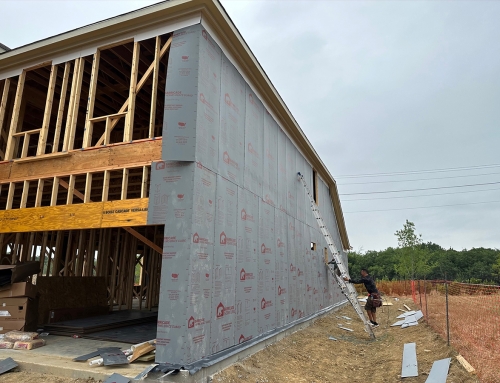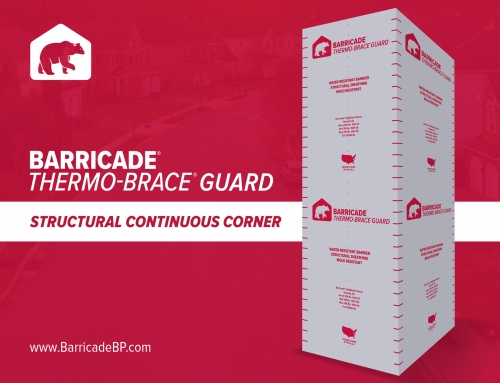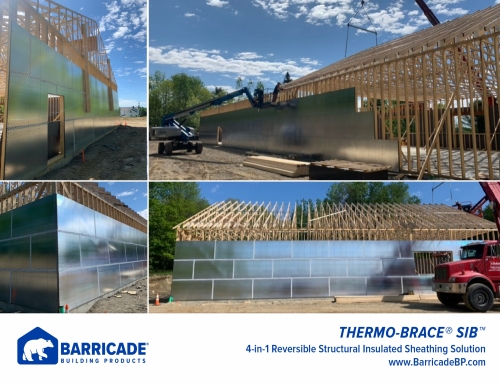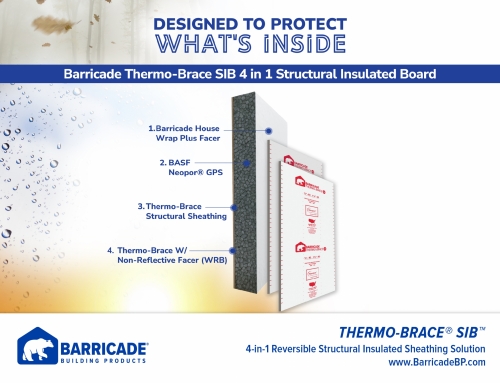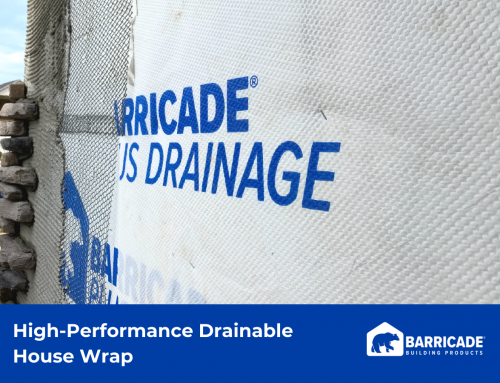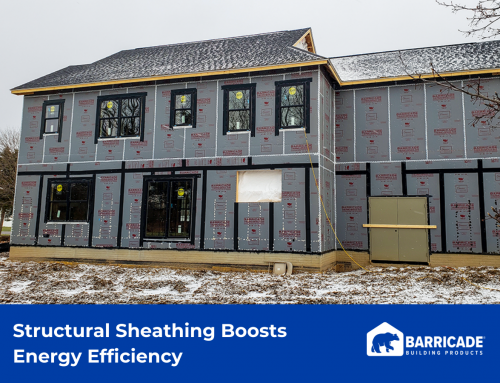Over the past 40 years, a growing awareness of the importance of sustainability, reducing energy use, and creating healthy indoor spaces has prompted many changes in the building industry. To achieve these goals, contractors must aim to select methods and materials that produce tight building envelopes that will stop air and moisture infiltration.
One method of achieving a tight building envelope involves continuous insulation (CI) across every structural member of the building, along with an application of an efficient vapor barrier sealed with a high-quality construction seaming tape.
Sealing the seams of the barrier with a high-performing tape helps to ensure a continuous air barrier that reduces moisture intrusion and accumulation into the wall system. CI and a properly sealed vapor barrier provide crucial components of an energy-efficient, durable, and healthy building.
How to Choose the Best Construction Tape for Vapor Barrier Seams
With so many seam tapes on the market, choosing the best one can overwhelm builders. However, selecting the right tape makes a significant difference in energy efficiency, durability, and indoor air quality (IAQ). Today’s contractors can choose between three types of tape: asphaltic, rubber (butyl), and acrylic.
When comparing construction seam tapes, contractors should consider the following factors:
1. Tape adhesion
In hot, cold, and wet environments, the tape should maintain adhesion over time.
2. Ease of application
Tapes with marked edges make it easier to tear and quicker to apply, saving workers time and frustration. In addition, a flexible tape hastens applications because it allows contractors to seal quickly around any penetrations or tight corners.
3. Durability
Builders should select tape with excellent air- and moisture-resistance.
4. UV Resistance
Good construction tape provides UV resistance.
5. Longevity
Look for a durable seam tape with enough tensile strength to maintain its form and stay flat against the vapor barrier over the lifetime of the building project.
6. Avoid tapes that contain toxins
7. The cost of seaming tape
Contractors must also consider the cost of the different types and brands of tape, which can vary tremendously. However, for the protection of the building envelope, the tape must provide long-term adhesion, ease of application, low-permeability, resistance to air, moisture, and UV rays, and durability.
A Comparison of Asphaltic, Rubber, and Acrylic Construction Seam Tapes
Asphaltic Construction Seaming Tape
The low cost of asphaltic tape makes it one of the most widely used tapes in the building industry. However, its many problems should discourage builders from using it.
- Notably, asphaltic tape’s adhesion properties may not be consistent, depending on the surface being sealed.
- Asphaltic tapes also lose adhesion properties in both extremely high and low temperatures, become brittle in cold weather, and lose durability when exposed to UV rays.
- Furthermore, asphaltic tape gives off harmful volatile organic compounds (VOCs).
While the price of asphaltic tape may appeal to builders, it may not be the best choice for a construction tape for vapor barrier seams.
Rubber (Butyl) Construction Seaming Tape
The original design of the rubber (butyl) construction seaming tape aimed to improve on asphaltic tape. The first rubber tape used natural rubber components. Today’s rubber tape, called butyl tape, uses a synthetic (elastomer) rubber. Butyl tape performs better in extreme temperatures, and it retains flexibility and durability over time compared to asphaltic tapes.
However, compared to acrylic seam tape, butyl tape can lose adhesion and discolor over time due to its intolerance to cold temperatures and UV rays.
Acrylic Construction Seaming Tape
Acrylic seam tape adapts to any surface and temperature and performs far better than either asphaltic and butyl tapes. Builders will find acrylic seam tape well worth the small extra expense over asphaltic and butyl tapes. Acrylic tape…
- Offers superior long-term durability over asphaltic and butyl tape.
- Provides adhesion properties that gain strength over time, compared to asphaltic and butyl tapes that lose adhesion over time.
- Can withstand temperature extremes without any loss of adhesion or performance, unlike asphaltic and butyl tape.
- Can be used both indoors and outdoors.
- Does not emit VOCs.
- Tolerates UV exposure, unlike asphaltic and butyl tape.
Builders that use acrylic tape to seal the seams of a vapor barrier ensure a tight building envelope. A tightly sealed building envelope reduces energy use and moisture intrusion, which prevents the growth of mold. Mold can degrade the integrity of a building and create an unhealthy IAQ.
Contractors striving to keep up with increasing energy codes and demands for healthy indoor environments should switch to acrylic tape, like Barricade Seam Tape, for vapor barrier seams.
Why Select Barricade Seam Tape for Vapor Barrier Seams?
Barricade Acrylic Seam Tape seals the joints between adjacent layers of a vapor barrier where air and moisture could penetrate the wall system. Barricade Seam Tape helps produce a continuous and tight building envelope that reduces energy costs and improves the integrity and IAQ of a building:
- The composition of the tape includes a polypropylene film coated with a cold-weather acrylic adhesive system. The product ensures adhesion between the seam tape and the house wrap.
- The flexibility and ease of application save contractors time and money.
- The air- and moisture-resistance and low-permeability of Barricade Acrylic Seam Tape contributes to the durability and health of a building.
- The tape’s tensile strength provides long-term durability for the product.
- With low to no VOC, it contributes towards a healthy interior.
To meet the demands of today’s energy-efficient and healthy structures, builders must apply CI, along with an efficient vapor barrier system sealed with a high-quality construction seaming tape, like Barricade Acrylic Seam Tape. Sealing the seams of a vapor barrier system with Barricade Seam Acrylic Tape will ensure a tight continuous air barrier that reduces moisture intrusion and accumulation into the wall system. Please contact Barricade Building Products for more information on how to select the best construction tape for vapor barrier systems.


